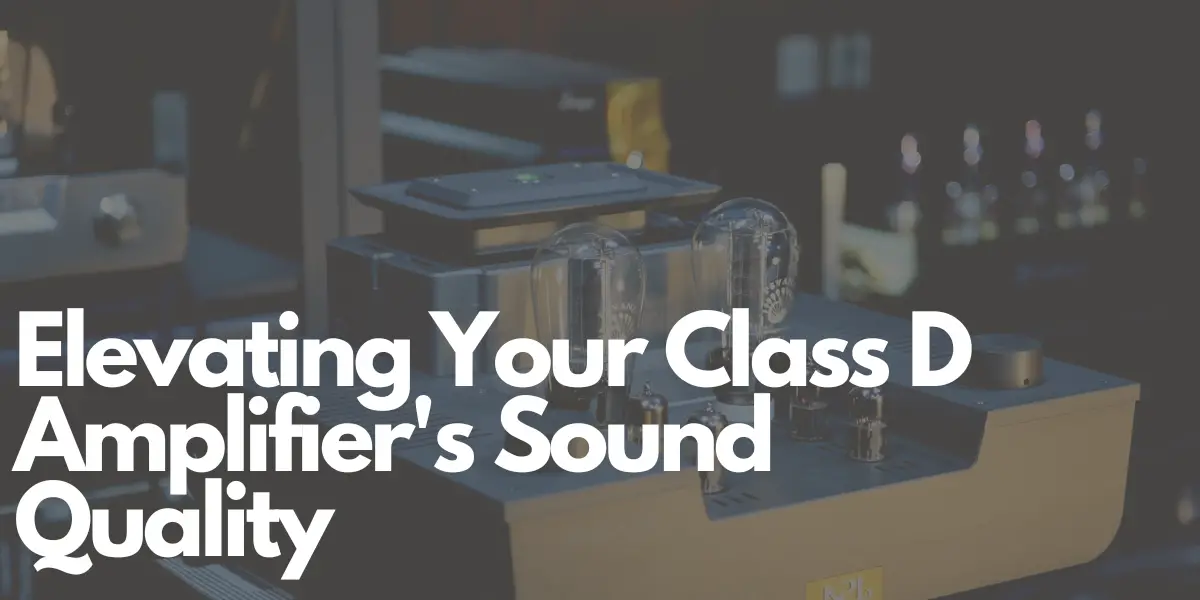Class D amplifiers have gained popularity among audio enthusiasts and professionals for their efficiency and compact design. However, even the most efficient amplifier can benefit from some fine-tuning to enhance its sound quality. In this article, we’ll delve into some effective strategies to make your Class D amplifier sound even better.
1. Opt for Quality Components
The cornerstone of superior sound quality in any amplifier is the quality of its components. This encompasses not only the amplifier chip but also the power supply, capacitors, resistors, and other internal elements. Choosing higher-quality components can result in cleaner audio and improved signal processing. Consider upgrading your components if feasible, as this can lead to noticeable sound improvements.
2. Enhance the Power Supply
The power supply is a critical player in your Class D amplifier’s performance. A stable and clean power supply can reduce noise and interference, leading to improved sound quality. Consider upgrading the power supply with high-quality capacitors and filtering to provide a more stable voltage to the amplifier.
3. Tackle EMI and RFI
Electromagnetic interference (EMI) and radio-frequency interference (RFI) can negatively affect your Class D amplifier’s performance. To minimize these interferences, ensure that your amplifier is adequately shielded. Employ shielded cables and incorporate ferrite chokes into the input and output cables to reduce noise.
4. Master Grounding and Layout
Proper grounding and layout are essential to minimize noise and interference. Ensure that your amplifier is grounded correctly, and keep signal and power cables separated to reduce crosstalk. A well-thought-out layout can help maintain signal integrity and minimize interference.
5. Prioritize Quality Input Sources
The source of your audio signal can significantly impact your amplifier’s sound quality. Utilizing high-quality audio sources such as a dedicated preamplifier, a high-resolution DAC, or lossless audio files can provide a cleaner and more detailed signal to your Class D amplifier.
6. Speaker Matching
Selecting the right speakers for your amplifier is crucial. Ensure that the impedance and power handling capabilities of your speakers match well with the amplifier’s output. This can prevent distortion and ensure optimal sound quality.
7. Consider Room Acoustics
Don’t overlook the acoustics of the room where your system is set up. Proper room treatment, such as adding absorptive and diffusive materials, can help eliminate unwanted reflections and resonances, ultimately improving the perceived sound quality.
8. Invest in Quality Cables
While debates about expensive audio cables persist, using decent-quality cables that are properly shielded can help reduce signal loss and interference. Ensure that your cables are suitable for the signal paths and distances involved.
9. Explore Firmware and DSP Settings
If your Class D amplifier boasts digital signal processing (DSP) capabilities, explore the available settings and presets. Adjusting parameters like EQ, crossover frequencies, and signal processing can fine-tune the sound to your preferences and room characteristics.
10. Allow for a Break-In Period
Some audio components, including amplifiers, may require a “break-in” period to settle into their optimal performance. Give your Class D amplifier some time to reach its full potential by playing music through it at moderate levels for an extended period.
In conclusion, while Class D amplifiers are renowned for their efficiency and compact design, there are several ways to elevate their sound quality. By thoughtfully considering components, power supply, shielding, grounding, source material, speaker matching, room acoustics, cables, and firmware settings, you can significantly enhance the performance of your Class D amplifier. Implementing these tips will undoubtedly lead to a better listening experience that captures the full scope of your audio system’s potential.
Author: Mike P
Hi! My name is Mike! I’ve been an apartment producer/musician for 10+ years. I’ve played in punk bands, released EDM tunes on Beatport and iTunes, and have a semi-successful stock music portfolio. Read more…


